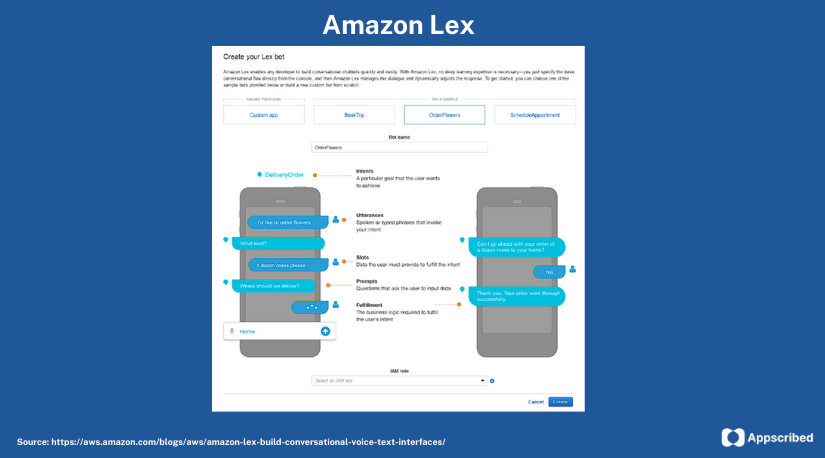Evolution of AI has been a debatable topic as industries actively integrate AI within their functional and operation aspects. Do you think AI has a role to play in the constantly changing SaaS environment? Let’s have a look at how AI evolved, its integration, and the way it is impacting the SaaS industry.
The SaaS industry currently has an evaluation of $197 billion dollars and is projected to reach $232 billion by 2024 according to Statista.com. Can this development be accredited to the integration of AI within the industry?
With AI being increasingly adopted by a number of industries with a CAGR of 37.3%, the evaluation of AI is expected to reach $1,811.8 billion by 2030.
AI SaaS has evolved as a catalyst for innovation, transforming the way we interact with technology and leveraging data in unprecedented ways.
Impact of AI on SaaS Industry
AI has significantly led to key developments within the SaaS industry, bringing about improvements in efficiency, user experience, and business operations. Highlighting the major developments within the ai based SaaS, a table has been portrayed below:
| Development | Impact | Outcome |
|---|---|---|
| Enhanced User Experience | AI-driven personalization tailors user experiences based on historical data, preferences, and behaviors. | Increased user satisfaction and engagement, leading to higher retention rates. |
| Predictive Analytics for Customer Retention | AI analyzes user behavior to predict potential churn and identifies proactive retention strategies. | Reduced customer turnover rates, resulting in more stable revenue streams. |
| Automated Customer Support | AI-powered chatbots handle routine customer queries, providing instant and accurate responses. | Improved customer support efficiency, reduced response times, and lower operational costs. |
| Data Security and Compliance | AI enhances cybersecurity by detecting anomalies and potential threats in real-time. | Improved data security, reduced risks, and compliance with industry regulations. |
| Smart Data Insights | AI-driven analytics processes vast datasets to provide actionable insights for strategic decision-making. | Informed decision-making, improved business strategies, and increased competitiveness. |
| Automated Data Entry and Processing | AI automates repetitive data entry tasks, streamlining data processing workflows. | Increased operational efficiency, reduced errors, and faster data processing. |
| Dynamic Pricing Optimization | AI analyzes market trends and user behavior to optimize pricing models dynamically. | Improved revenue generation through optimized pricing strategies. |
| Natural Language Processing (NLP) for Collaboration | NLP facilitates natural language interactions in collaborative tools, improving communication. | Enhanced team collaboration, increased productivity, and streamlined workflows. |
| Smart Content Recommendations | AI analyzes user content consumption patterns to provide personalized content recommendations. | Increased user engagement, higher click-through rates, and improved content relevance. |
| Performance Monitoring and Optimization | AI-driven analytics continuously monitor system performance and suggest optimization strategies. | Reduced downtime, improved reliability, and enhanced overall system performance. |
| Automated Software Testing | AI automates software testing processes, identifying and fixing bugs more efficiently. | Accelerated release cycles, reduced errors, and improved software quality. |
| Dynamic Resource Allocation | AI optimizes resource allocation based on usage patterns and demand fluctuations. | Improved resource utilization, cost savings, and scalable infrastructure. |
What are the Features of AI that are Crucial in SaaS?
The evolving AI market has significantly contributed to the SaaS industry. It has enabled businesses to consider adaptation of a number of features within their functional and operational aspects. The popular features of AI in SaaS have been provided below:
Predictive Analytics
AI algorithms are programmed in order to analyze historical data and predict future trends, enabling businesses to make informed decisions and develop potential strategies.
Examples:
Einstein Analytics (Salesforce): Forecasting customer behavior and identifying sales opportunities.

Tableau CRM (Tableau): Empowering businesses with AI-driven CRM analytics for better decision-making.

H2O.ai (H2O.ai): An open-source AI platform for predictive analytics, machine learning, and deep learning.

Personalization
AI-driven personalization tailors user experiences based on individual preferences, behaviors, and historical interactions.
Examples:
Adobe Sensei (Adobe): Powering personalization features, including product recommendations and content targeting.

Google Cloud AI Platform (Google): Offering AI tools for personalized user experiences, recommendation engines, and natural language processing.

Amazon Personalize (Amazon): Creating personalized experiences through machine learning.

Chatbots and Virtual Assistants
AI-powered chatbots and virtual assistants provide instant and automated customer support, handling routine queries and tasks.
Examples:
Dialogflow (Google): Crafting and deploying chatbots and virtual assistants with natural language capabilities.

Amazon PersonalizeAmazon Lex (Amazon): Cloud-based speech recognition and natural language understanding for building intelligent chatbots.

Microsoft Azure Bot Service (Microsoft): Building, deploying, and managing chatbots and virtual assistants.

Natural Language Processing
NLP enables machines to understand, interpret, and generate human-like text, facilitating natural language interactions in applications.
Examples:
Google Cloud Natural Language (Google): A suite of NLP APIs for text analysis and understanding.

Amazon Comprehend (Amazon): NLP service for extracting meaning from text, identifying entities, sentiments, and relationships.

Microsoft Azure Cognitive Services (Microsoft): A comprehensive suite including text analytics, machine translation, and speech recognition.

Machine Learning Algorithms
ML algorithms learn from data patterns, improving over time and providing valuable insights, recommendations, and predictions.
Examples:
Scikit-learn (Python): A versatile, open-source machine learning library for Python.

TensorFlow (Google): An open-source software library for numerical computation used in machine learning and deep learning.

PyTorch (Facebook AI Research): An open-source machine learning framework popular for developing deep learning models.

Automated Data Entry and Processing
AI automates data entry tasks, reducing manual efforts and errors in data processing workflows.
Examples:
UiPath: A robotic process automation (RPA) platform automating data entry and processing tasks.

Automation Anywhere: Another RPA platform streamlining data entry and processing.

Power Automate (Microsoft): A cloud-based automation platform automating data-related tasks.

Image and Speech Recognition:
AI capabilities include image and speech recognition, enabling applications to interpret and respond to visual or auditory inputs.
Examples:
Google Cloud Vision (Google): Cloud-based computer vision API for identifying objects, faces, and landmarks in images.

Amazon Rekognition (Amazon): Cloud-based computer vision service for analyzing and understanding images.

Microsoft Azure Cognitive Services (Microsoft): Includes a computer vision API for identifying objects, faces, and text in images.

Smart Content Recommendations
AI analyzes user behavior to recommend personalized content, products, or services, enhancing user engagement.
Examples:
Personalize (Amazon): A machine learning service creating personalized content recommendations.
Google Cloud Recommendation Engine: A machine learning service offering personalized recommendations.

Microsoft Personalized Recommendations (Microsoft): A cloud-based service creating personalized recommendations.

Dynamic Pricing Optimization
AI optimizes pricing strategies based on market trends, user behavior, and other relevant factors, maximizing revenue.
Examples:
PriceWaiter: Providing dynamic pricing optimization solutions for e-commerce businesses.

Algopix: Offering dynamic pricing optimization solutions for hotels.

Profitbase (Profitbase): Delivering dynamic pricing optimization solutions for airlines.
Security and Fraud Detection
AI enhances cybersecurity with features like anomaly detection, identifying and mitigating potential security threats in real-time.
Examples:
Darktrace (Darktrace): A SaaS company providing AI-powered security solutions for detecting and responding to cyber threats.

Automated Software Testing
AI automated testing processes, improving the efficiency and effectiveness of software testing and quality assurance.
Applitools: Applitools is a SaaS company that provides AI-powered visual testing and monitoring solutions.

Testim: Testim is a SaaS company that provides AI-powered automated testing solutions for web and mobile applications.

Perfecto: Perfecto is a SaaS company that provides AI-powered testing and monitoring solutions for mobile and web applications.

Collaborative Filtering
AI employs collaborative filtering techniques to make product or content recommendations based on user behavior and preferences.
Applitools: Applitools is a SaaS company that provides AI-powered visual testing and monitoring solutions.
Testim: Testim is a SaaS company that provides AI-powered automated testing solutions for web and mobile applications.
Perfecto: Perfecto is a SaaS company that provides AI-powered testing and monitoring solutions for mobile and web applications.
Sentiment Analysis
AI analyzes user-generated content to determine sentiment, helping businesses understand customer opinions and feedback.
Amazon Personalize (Amazon): Amazon Personalize is a machine learning service that helps SaaS companies create personalized product and content recommendations for their customers.
Google Cloud Recommendation Engine (Google): Google Cloud Recommendation Engine is a machine learning service that helps SaaS companies define and creation of personalized recommendations for their customers.
Microsoft Personalized Recommendations (Microsoft): Microsoft Personalized Recommendations is a cloud-based service that helps SaaS companies create personalized recommendations for their customers.
Dynamic Resource Allocation
AI optimizes resource allocation in cloud-based SaaS applications, ensuring efficient usage and scalability.
Amazon Comprehend (Amazon): Amazon Comprehend is a natural language processing (NLP) service that can be used to extract meaning from text and identify sentiments, entities, and relationships.
Google Cloud Natural Language (Google): Google Cloud Natural Language is a set of NLP APIs that SaaS companies can use to analyze and understand text, including sentiment analysis.
Microsoft Azure Cognitive Services (Microsoft): Microsoft Azure Cognitive Services includes a text analytics API that can be used to perform sentiment analysis on text.
Workflow Automation
AI automates routine tasks and processes within workflows, improving operational efficiency and reducing manual workloads.
Cloudability (Cloudability): Cloudability is a SaaS company that provides cloud cost management and optimization solutions.
Nutanix Calm (Nutanix): Nutanix Calm is a SaaS company that provides cloud automation and orchestration solutions.
Morpheus Data (Morpheus Data): Morpheus Data is a SaaS company that provides cloud management and orchestration solutions.
Sales and Marketing Automation
AI-driven tools automate sales and marketing processes, from lead generation to customer engagement, improving conversion rates.
Zapier (Zapier): Zapier is a SaaS company that provides a platform for automating tasks between web applications.
Integromat (Integromat): Integromat is a SaaS company that provides a platform for automating tasks between web applications.
Microsoft Power Automate (Microsoft): Microsoft Power Automate is a cloud-based automation platform that can be used to automate tasks between web applications.
Customer Behavior Analytics
AI analyzes customer behavior to provide insights into preferences, allowing businesses to tailor products and services.
Speech-to-Text and Text-to-Speech
AI enables applications to convert spoken language into written text, facilitating communication and accessibility.
Health Monitoring and Predictive Maintenance
AI monitors the health of systems and equipment, predicting potential issues and recommending maintenance actions.
Supply Chain Optimization
AI optimizes supply chain processes by analyzing data to enhance forecasting, inventory management, and logistics.
Evolution of AI
Artificial intelligence, a term first coined at the Dartmouth Conference in the year 1965 has evolved a lot since then. With advancements in technology, a number of changes and innovation was experienced in this sector. A timeline of the evolution of AI has been provided below tracing the changes and key players in its development till date:

- 1950s: Alan Turing published his paper “Computing Machinery and Intelligence,” which introduces the Turing test as a way to measure machine intelligence.
- 1956: The Dartmouth Summer Research Project on Artificial Intelligence is held, which is widely considered to be the birth of modern AI research.
- 1957: Frank Rosenblatt invents the perceptron, a simple artificial neural network.
- 1960s: The first AI programs were developed, such as ELIZA, a chatbot that could simulate human conversation.
- 1970s: AI research experiences a setback known as the “first AI winter.” This is due to a number of factors, including unrealistic expectations and the limitations of the computing power of the time.
- 1980s: AI research begins to recover, with advances in machine learning and expert systems.
- 1990s: The development of the World Wide Web led to a surge of interest in AI, as researchers began to explore how to develop AI systems that can process and understand natural language.
- 2000s: The development of deep learning algorithms led to a breakthrough in AI performance. Deep learning algorithms are able to learn from large amounts of data to perform tasks such as image recognition and natural language processing.
- 2010s: AI systems begin to achieve human-level performance on a number of tasks, such as playing games and translating languages. AI is also used to develop new products and services, such as self-driving cars and virtual assistants.
Also read: Evolution of SaaS SEO
Current Trends in the AI Industry
The section above highlights the major changes since the launch of AI. With innovation and technology evolving, the industry gained momentum and has witnessed the launch of a number of platforms. Mentioned below are the current trends in the sector:
- The development of large language models, such as GPT-3 and LaMDA, which can generate text, translate languages, write different kinds of creative content, and answer your questions in an informative way.
- The development of new AI algorithms for computer vision and natural language processing, which are being used to develop new products and services such as self-driving cars and virtual assistants.
- The increasing use of AI in the healthcare, financial services, and manufacturing industries.
What are the Major Recent Breakthroughs in AI Evolution?
In the dynamic realm of AI, recent breakthroughs have illuminated a path towards unprecedented capabilities.
AI has offered organizations and individuals to undertake AI audio generation which can be accredited to the breakthroughs which have accomplished within the AI sector.
These milestones not only showcase the prowess of AI, but also lay the foundation for groundbreaking algorithms and models that redefine the possibilities.

Here are the key highlights of the latest advancements and their transformative impact:
Transformer Architecture (2017):
- Breakthrough: The introduction of the Transformer architecture marked a paradigm shift, especially in natural language processing.
- Impact: Transformers empowered models like BERT and GPT, revolutionizing language understanding and generation
Generative Adversarial Networks (GANs) for Image Synthesis (2014):
- Breakthrough: GANs emerged as a powerhouse for creating realistic images, with the introduction of DCGAN.
- Impact: StyleGAN, a subsequent innovation, enhanced control over image styles, influencing fields from art to medical imaging.
AlphaGo’s Triumph (2016):
- Breakthrough: AlphaGo, developed by DeepMind, defeated the world champion Go player.
- Impact: Demonstrated the capabilities of deep reinforcement learning, sparking interest in AI’s adaptability to complex strategy games.
Reinforcement Learning Breakthroughs (2018-2019):
- Breakthrough: Notable advancements in reinforcement learning algorithms like PPO and SAC.
- Impact: Improved stability and efficiency in training AI agents, impacting applications in robotics and gaming.
Transfer Learning and Pre-training (2018-Present):
- Breakthrough: The rise of transfer learning with models like GPT and BERT.
- Impact: Pre-training on massive datasets enables models to generalize better, with applications across various NLP tasks.
Neural Architecture Search (NAS):
- Breakthrough: The concept of automated neural architecture design gained momentum.
- Impact: Algorithms like ENAS and DARTS automate the design process, optimizing model architectures for specific tasks.
Quantum Machine Learning (Ongoing):
- Breakthrough: Exploration of the intersection between quantum computing and machine learning.
- Impact: Potential for solving computationally intensive problems with quantum machine learning algorithms.
Meta-Learning and Few-Shot Learning (2019-Present):
- Breakthrough: Meta-learning approaches like MAML and emphasis on few-shot learning.
- Impact: Models can quickly adapt to new tasks with minimal data, enhancing generalization capabilities.
Explainable AI (XAI):
- Breakthrough: A growing focus on Explainable AI (XAI) to enhance model interpretability.
- Impact: Addresses concerns related to transparency and accountability in complex AI decision-making processes.
Impact on Algorithmic Landscape
The ripple effects of recent breakthroughs extend to the algorithmic landscape, shaping new paradigms:
- Multimodal Models:
- Evolution: AI models transcending unimodal constraints, learning and generating diverse data types.
- Impact: Enhanced versatility and power across industries through the incorporation of multiple data modalities.
- Self-Supervised Learning Models:
- Evolution: A paradigm shift towards models capable of learning from unlabeled data.
- Impact: Scalability and efficiency gains, as self-supervised learning reduces the dependency on extensive labeled datasets.’
Also Read: A Guide To Troubleshooting Copywriting AI Tools
Pivotal Technical Nuances that advanced with Time
- Neural Network Advancements: From traditional neural networks to the inception of complex deep neural networks, the layers of abstraction enable models to grasp intricate features and patterns.
- Transfer Learning Paradigms: Recent trends underscore the significance of transfer learning, allowing models like GPT-3 to leverage pre-training on vast datasets for improved performance across various tasks.
- Enhanced Training Techniques: Breakthroughs in reinforcement learning algorithms, such as PPO and SAC, contribute to the stability and efficiency of training AI agents in dynamic environments.
- Quantum Machine Learning Explorations: The synergy between quantum computing and machine learning charts new territories, potentially resolving computationally intensive problems.
In essence, the recent strides in AI research not only signify accomplishments but also lay the groundwork for the next frontier.
As AI evolves, the amalgamation of technical intricacies and transformative breakthroughs propels the field towards uncharted realms, promising a future where AI becomes an even more integral part of our technological landscape.
How has the SaaS Industry Evolved?
SaaS as a sector has seen a number of advancements with technology evolving in the dynamic world. SaaS as a key player is being considered in a number of industries, and a few of them are mentioned below:

The question remains, how was SaaS introduced and what are the changes that have been made in the concerned industry? A timeline of advancements and changes has been mentioned below to effectively understand how the SaaS industry came into existence:
- Early Days and Adoption (1990s-2000s): The concept of delivering software over the Internet emerged in the 1990s. Salesforce, founded in 1999, played a pivotal role by introducing the first widely adopted SaaS application for customer relationship management (CRM). This marked the beginning of the SaaS era.
- Cost-Efficiency and Accessibility: One of the key drivers behind SaaS adoption was its cost-efficient model. Instead of hefty upfront costs for software licenses and hardware, businesses could subscribe to SaaS solutions on a pay-as-you-go basis. This made cutting-edge software accessible to a broader range of businesses, including startups and small enterprises.
- Scalability and Flexibility: SaaS provides a scalable solution that can adapt to the changing needs of businesses. As organizations grow, they can easily scale their usage of SaaS applications without the complexities associated with traditional software deployment.
- Elimination of Maintenance Burden: Traditional software requires organizations to manage updates, patches, and hardware maintenance. SaaS shifted this burden to the service provider, freeing businesses to focus on core competencies rather than IT infrastructure management.
- Collaboration and Remote Work: SaaS applications facilitate collaboration and remote work. With the rise of distributed teams and the need for seamless communication, cloud-based tools such as Slack, Google Workspace, and Microsoft 365 have become instrumental in enabling collaboration across geographies.
- Diverse Industry Adoption: SaaS has transcended industry boundaries. It is extensively used in sectors ranging from finance and healthcare to education and manufacturing. Businesses of all sizes, from startups to large enterprises, leverage SaaS solutions for diverse functions, including project management, HR, finance, and more.
- Subscription-Based Model: The subscription-based model of SaaS aligns with changing business dynamics. Instead of one-time purchases, businesses subscribe to services, fostering long-term relationships with SaaS providers. This model ensures continuous updates and improvements, keeping software relevant and up-to-date.
- Data Security and Compliance: SaaS providers invest significantly in security measures, often surpassing the capabilities of individual businesses. This has addressed concerns about data security, making SaaS a viable option for handling sensitive information, even in regulated industries.
- Integration Capabilities: SaaS applications are designed with integration in mind. They easily integrate with other tools and platforms, allowing businesses to create comprehensive ecosystems that cater to their specific needs.
- Shift to Microservices Architecture: The adoption of microservices architecture in SaaS development enhances flexibility and scalability. This modular approach allows for easier updates, maintenance, and the introduction of new features without disrupting the entire system.
How Does the SaaS Industry Contribute to Modern Business Strategies?
The SaaS industry has played a key role in revolutionizing the modern business model for companies. The SaaS industry significantly contributes to modern business strategies, influencing how organizations operate, innovate, and compete in the dynamic business landscape. Below-mentioned are the contributions of SaaS to the modern business approach by organizations operating at a small or large scale:
Agility and Rapid Deployment
SaaS solutions enable businesses to quickly deploy and adopt new technologies. This agility is crucial in responding to market changes, staying competitive, and swiftly adapting to emerging opportunities or challenges.
Cost Optimization
The subscription-based model of SaaS eliminates the need for significant upfront investments in software licenses and infrastructure. Businesses can optimize costs by paying for the services they use, avoiding the burden of maintaining and upgrading on-premises solutions.
Scalability
SaaS applications are designed to scale seamlessly. As businesses grow, they can easily scale their usage of SaaS solutions without the need for major overhauls or additional infrastructure investments. This scalability supports organizational growth and expansion.
Focus on Core Competencies
By leveraging SaaS solutions, businesses can offload the management of software infrastructure to SaaS providers. This allows organizations to focus on their core competencies and strategic initiatives, redirecting resources and efforts towards activities that directly contribute to their unique value proposition.
Collaboration and Communication
SaaS tools for collaboration and communication enhance teamwork within organizations. Platforms like project management tools, messaging apps, and collaborative document editing software contribute to improved communication, efficiency, and overall productivity.
Innovation and Competitive Edge
SaaS companies are at the forefront of technological innovation. By adopting cutting-edge SaaS applications, businesses can leverage the latest technologies, ensuring that they stay competitive in their respective industries and have a technological edge over competitors.
Data-Driven Decision-Making
Many SaaS applications offer robust analytics and reporting capabilities. This contributes to data-driven decision-making by providing insights into various aspects of business performance. Organizations can use these analytics to identify trends, make informed decisions, and optimize strategies.
Global Accessibility
SaaS solutions are accessible over the internet, enabling businesses to operate globally with ease. This global accessibility is crucial for organizations with distributed teams or those expanding their market reach internationally.
Security and Compliance
SaaS providers invest heavily in security measures to protect user data. Businesses can leverage the expertise of SaaS companies to ensure data security and compliance with industry regulations, reducing the burden on in-house IT teams.
Ecosystem Integration
SaaS applications are designed with integration in mind. They can seamlessly integrate with each other and with other third-party tools, creating comprehensive ecosystems. This integration capability streamlines processes, improves efficiency, and enhances the overall functionality of the business.
Challenges with SaaS AI Platform
Embedding Artificial Intelligence (AI) into Software as a Service (SaaS) enterprises holds promising prospects for driving innovation and streamlining efficiency. You can get an idea from the number of apps on AI tools directories. Nevertheless, akin to any groundbreaking technology, it confronts a unique set of challenges. Let’s explore the intricate hurdles linked to the integration of AI within SaaS companies.
| Challenge | Description |
|---|---|
| Data Quality and Accessibility | AI algorithms heavily rely on high-quality data for accurate predictions and insights. SaaS companies often face challenges in ensuring data quality, and accessibility can be an issue when data is stored in disparate systems. |
| Data Privacy and Security | SaaS companies deal with sensitive customer data. Integrating AI raises concerns about data privacy and security. Ensuring compliance with regulations like GDPR and implementing robust security measures becomes crucial. |
| Talent Shortage and Skill Gap | There is a shortage of skilled AI professionals. SaaS companies may struggle to find and retain talent with expertise in both their industry domain and AI technologies, leading to a skill gap. |
| Integration Complexity | Integrating AI into existing SaaS infrastructures can be complex. Ensuring seamless integration without disrupting ongoing operations requires careful planning and execution. |
| Interoperability with Legacy Systems | Many SaaS companies have legacy systems in place. Ensuring interoperability between AI solutions and these legacy systems can be challenging and may require significant modifications. |
| Ethical Considerations | AI decisions may have ethical implications. SaaS companies need to address questions of bias, transparency, and accountability in AI algorithms to maintain ethical standards. |
| Costs and ROI Concerns | Implementing AI can be expensive, and SaaS companies may be concerned about the return on investment (ROI). Calculating the long-term benefits versus costs can be challenging. |
| User Acceptance and Change Management | Employees may resist changes brought about by AI integration. Ensuring user acceptance and implementing effective change management strategies are essential for successful AI adoption. |
| Regulatory Compliance | The legal landscape around AI is evolving. SaaS companies must navigate complex regulations and standards to ensure compliance, which can be particularly challenging in industries with stringent regulations. |
| Explainability and Transparency | AI algorithms can be complex and difficult to interpret. Ensuring explainability and transparency in AI decision-making is crucial, especially when dealing with customers or regulatory bodies. |
| Scalability | As SaaS companies grow, the scalability of AI systems becomes vital. Ensuring that AI solutions can handle increased data volumes and user interactions without sacrificing performance is a persistent challenge. |
| Continuous Learning and Adaptation | AI systems need to continuously learn and adapt to evolving data patterns. Ensuring that AI models stay relevant and accurate over time requires ongoing monitoring and adjustments. |
| Cultural Shift | Integrating AI often requires a cultural shift within the organization. Ensuring that employees embrace AI as a tool that enhances their work rather than a threat to job security is a challenge. |
Future Implications of AI-Based SaaS
The evolution of AI is constantly paving the way for the integration of AI into SaaS marketplace a future where intelligent systems empower businesses to operate with unprecedented efficiency, creativity, and responsiveness. While challenges exist, the ongoing advancements in AI technology promise a landscape where SaaS becomes not just a service but an intelligent and indispensable partner in business operations. Mentioned below are the future implications of AI SaaS platform:
Enhanced Personalization
AI-powered SaaS applications will evolve to understand user preferences and behaviors, delivering hyper-personalized experiences. Anticipatory recommendations and tailored interfaces will become the norm.
Advanced Predictive Analytics
AI’s predictive capabilities will become more sophisticated, enabling businesses to make highly accurate forecasts, anticipate market trends, and make data-driven decisions with unprecedented precision.
Autonomous Systems and Automation
AI will increasingly automate routine tasks, leading to more autonomous SaaS systems. This will not only enhance operational efficiency but also free up human resources to focus on strategic and creative aspects of their work.
AI-Infused Collaboration
Collaboration tools will integrate advanced natural language processing, enabling more seamless and intelligent communication. Virtual assistants within collaboration platforms will enhance productivity and teamwork.
AI-Driven Creativity
AI will play a significant role in content creation, design, and even software development. Creative tools infused with AI will assist in generating compelling content, designs, and code snippets.
Continuous Learning and Adaptation
SaaS applications will become more self-optimizing, with AI continuously learning from user interactions and data patterns. This adaptability ensures that systems remain relevant and efficient over time.
Ethical AI and Governance
As AI becomes more integral, there will be an increased focus on ethical considerations. SaaS companies will need to establish robust ethical frameworks, ensuring fairness, transparency, and accountability in AI-driven decision-making.
Human-AI Collaboration
The future will witness increased collaboration between humans and AI, with AI serving as a tool for augmenting human decision-making rather than replacing it. This partnership will lead to more informed and strategic choices.
Industry-Specific Solutions
AI integration will result in the development of industry-specific SaaS solutions. These platforms will be finely tuned to address the unique challenges and requirements of different sectors, from healthcare to finance.
Cybersecurity Advancements
AI will play a crucial role in enhancing cybersecurity within SaaS applications. Advanced threat detection, real-time response mechanisms, and adaptive security measures will become standard features.
Quantum Leap in Customer Support
AI-powered chatbots and virtual assistants will reach new levels of sophistication, providing human-like interactions and resolving complex queries. Customer support will become more efficient and personalized.
Evolving Business Models
AI will aid SaaS companies in optimizing subscription models. Predictive analytics will be employed to forecast user behavior, leading to personalized pricing strategies and enhanced customer retention.
Accelerated Operations
In the near future, AI evolution will act as a driving force behind the rapid pace of interactions between individuals and large institutions. Businesses, government entities, and nonprofits will increasingly incorporate AI into decision-making processes and public-facing activities.
End to Privacy Boundaries
AI systems are poised to become highly proficient in understanding individuals, potentially surpassing our self-awareness. As the cost of delving into personal data decreases and more powerful algorithms emerge, societal emphasis on privacy may be more of a technological barrier than an inherent ethical commitment.
Complex AI Regulatory Landscape
The utilization of AI will navigate through a complex regulatory environment in the coming years. Governments worldwide, from local to national to transnational levels, are actively seeking to regulate the deployment of AI. In the United States, a dense thicket of AI-related laws is anticipated as city, state, and federal entities draft, implement, and enforce new regulations. The legal landscape for businesses will significantly intensify as a result.
Ethical Considerations for Top AI SaaS Companies
As the evolution of AI is constantly undergoing, it becomes an integral part of SaaS market, upholding ethical norms is not just a moral imperative but also a strategic approach to building trust with users, maintaining regulatory compliance, and fostering long-term sustainability. The integration of Artificial Intelligence (AI) into the Software as a Service (SaaS) industry necessitates a robust framework of ethical norms. As AI becomes increasingly intertwined with SaaS applications, the following ethical considerations should guide its development, deployment, and use:
| Ethical Consideration | Description |
|---|---|
| Transparency | SaaS companies should be transparent about the use of AI within their applications. Users should have a clear understanding of how AI algorithms operate and influence their experiences. |
| Fairness and Bias Mitigation | Developers must strive to eliminate biases in AI algorithms. SaaS applications should treat all users fairly, irrespective of demographic factors, to avoid reinforcing existing biases. |
| User Privacy | AI-driven SaaS platforms should prioritize user privacy. Clear policies and robust security measures should be in place to protect user data, and users should have control over the extent of data collection and usage. |
| Data Security | SaaS companies must prioritize the security of AI-related data. Robust encryption, secure storage practices, and measures to prevent unauthorized access are essential to maintain the integrity of AI systems. |
| Explainability and Accountability | AI systems within SaaS applications should be explainable. Users and stakeholders should be able to understand the rationale behind AI-driven decisions. Furthermore, there should be accountability mechanisms in place for errors or unintended consequences. |
| Informed Consent | Users should provide informed consent for the use of AI in SaaS applications. Companies should clearly communicate how AI is employed, and the purposes it serves, and seek user consent when necessary. |
| Safeguards Against Misuse | SaaS companies should implement safeguards to prevent the misuse of AI. This includes monitoring for unethical use cases, incorporating fail-safe mechanisms, and proactively addressing potential risks. |
| Accessibility and Inclusivity | AI-integrated SaaS applications should be accessible to all users, including those with disabilities. Developers should prioritize inclusive design and ensure that AI features do not inadvertently exclude certain user groups. |
| Continuous Monitoring and Auditing | Regular monitoring and auditing of AI systems are essential. SaaS companies should conduct periodic assessments to identify and rectify ethical concerns, ensuring ongoing compliance with ethical norms. |
| Collaborative Industry Standards | SaaS companies should actively participate in and contribute to the development of industry-wide ethical standards for AI. Collaboration with regulatory bodies, industry associations, and other stakeholders can help establish universally accepted norms. |
| Human-AI Collaboration | AI should augment human capabilities rather than replace them. SaaS applications should emphasize the collaborative relationship between AI and human users, avoiding scenarios where decisions solely rely on AI without human oversight. |
| Environmental Impact | Consideration of the environmental impact of AI infrastructure is crucial. SaaS companies should adopt practices that minimize energy consumption and carbon footprint associated with AI operations. |
Conclusion
AI-based SaaS developments are constantly being considered. These developments have helped business giants within the SaaS industry to make informed decisions and develop strategies that drive sales. It has potentially led to high consumer retention, and thus, has revolutionized the way SaaS leaders deal with their consumers.
AI’s future implications are yet to be revealed as it is a very dynamic concept and its aspects are constantly evolving as the technology advances. Thus, giving room for maximum development and scope of advancements for SaaS or any other industry.







